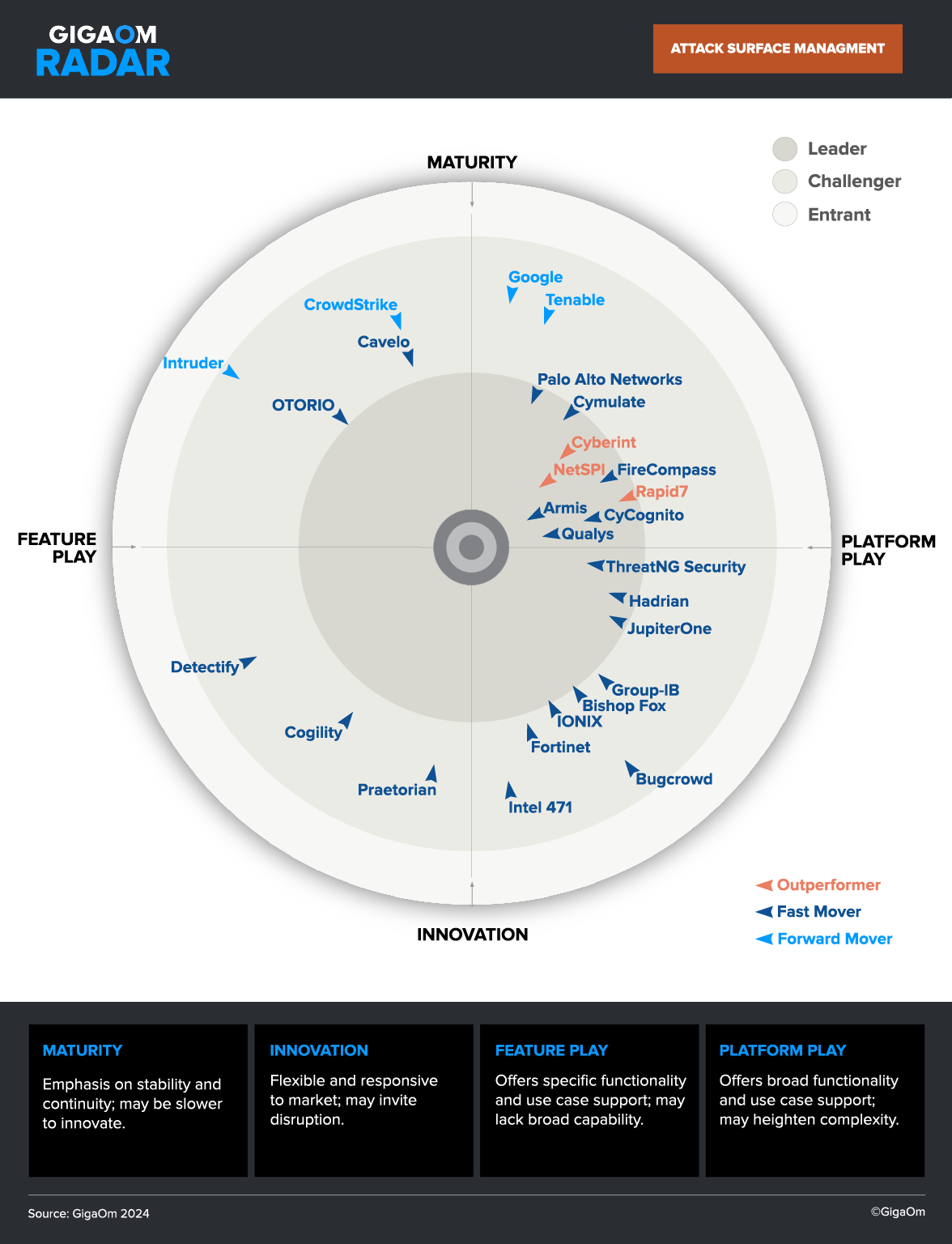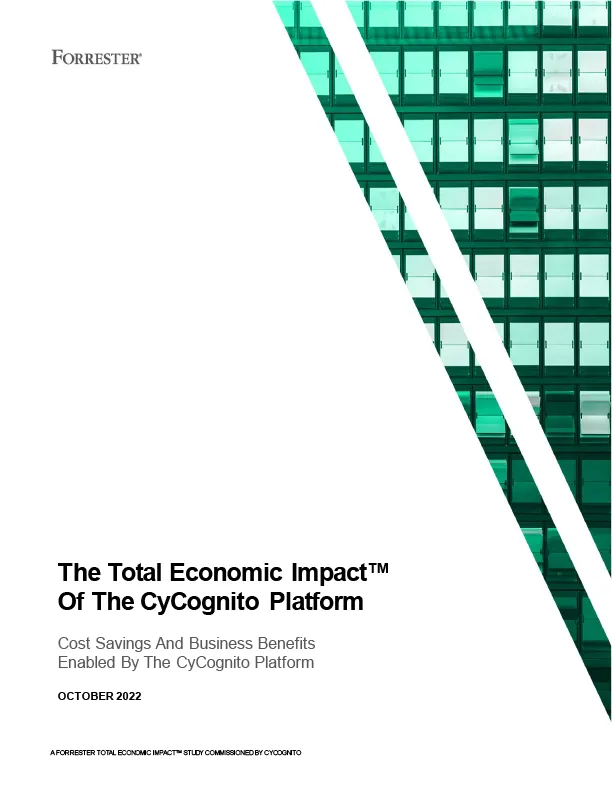How Does CAASM Compare to Similar Technologies?
There are several related technologies that can be used to improve an organization’s cybersecurity posture. Let’s compare these to CAASM.
CAASM vs. CSPM
Cloud Security Posture Management (CSPM) focuses on identifying misconfigurations and compliance risks within cloud infrastructures, primarily through continuous monitoring to detect gaps in security policy enforcement. While CSPM excels in spotting common misconfigurations and ensuring compliance with cloud environments, it often lacks the depth, visibility, and flexibility needed for monitoring custom configurations.
In contrast, CAASM offers a broader and more extensible approach. It not only encompasses the capabilities of CSPM but also provides comprehensive visibility across the entire attack surface, including both private and public clouds. CAASM goes beyond basic cloud configuration checks to monitor custom configurations and uncovers complex relationships and misconfigurations across all cyber assets. This enables organizations to have a more nuanced understanding and control over their security posture.
CAASM vs. CWPP
Cloud Workload Protection Platform (CWPP) is designed to protect workloads across various environments, including physical servers, virtual machines, containers, and serverless workloads. Its main goal is to scan and protect these workloads from misconfigurations, compliance violations, and security threats. CWPP is workload-centric, focusing on the security of the runtime environment and ensuring compliance with security policies and regulations.
CAASM offers a wider lens, focusing on the overall cyber asset attack surface, which includes not just the workloads but all associated assets within an organization's IT ecosystem. While CWPP provides essential protections for specific workloads, CAASM delivers a holistic view and continuous monitoring of all cyber assets. This includes identifying unknown risks, monitoring for compliance misconfigurations, and preventing drift in security and compliance postures across the entire cloud infrastructure.
CAASM vs. EASM
External Attack Surface Management (EASM) solutions focus on identifying external threats and vulnerabilities by scanning an organization's external digital footprint. EASM tools are adept at finding environment-based vulnerabilities and unknown external threats, helping organizations to secure their perimeter from potential attacks.
CAASM, however, provides a more integrated and comprehensive approach to cybersecurity. While EASM is crucial for understanding and mitigating external threats, CAASM extends this capability by offering complete visibility and management of all cyber assets, both internal and external. Through API integrations, CAASM solutions merge data from various sources to provide a unified view of an organization's entire cyber asset landscape.
CAASM vs. DRPS
Digital Risk Protection Services (DRPS) offers visibility into external threats by monitoring open-source intelligence, the dark web, deep web, and social media. Its main goal is to conduct risk assessments and protect an organization's brand by providing insights into potential threats, their strategies, and malicious activities. This information is crucial for threat intelligence analysis and helps organizations understand and mitigate external risks.
However, DRPS does not provide an inventory or comprehensive view of an organization's managed cyber assets. By contrast, CAASM offers a holistic view of an organization’s entire cyber asset infrastructure. CAASM aggregates data from various sources to overcome visibility and vulnerability challenges related to cyber assets. It not only helps in identifying what assets are present but also analyzes the attack surface to secure them against potential threats.
CAASM vs. CMDB
A Configuration Management Database (CMDB) is a centralized repository that stores detailed information about an organization's IT assets and their relationships. It supports various IT operations and change management processes, including incident, problem, and release management, by offering a clear view of the IT environment. This information is essential for effective IT service management and operational efficiency.
CAASM focuses on identifying, analyzing, and securing the organization's attack surface. Its primary goal is to minimize the likelihood of successful cyber attacks by identifying and mitigating vulnerabilities across the IT infrastructure, applications, and data.
While CMDB is pivotal for IT operations and managing changes within the IT environment, CAASM is geared towards cybersecurity and attack surface management. However, these two systems can complement each other. Information stored in a CMDB can inform CAASM processes by identifying assets and their configurations, which can then be analyzed for vulnerabilities and secured.
Implementing CAASM in Your Organization
Let’s look at some of the measures you can take to successfully implement CAASM in your organization.
Identify the Tools to Connect to CAASM
Start with identifying the tools that may hold asset information, which can be integrated with CAASM. These tools range from network security systems, IT service management tools, vulnerability management solutions, and more.
Your network security systems provide vital information about the network's architecture, the devices connected to it, and their respective configurations. With the data from these systems, you can map out your organization's cyber asset attack surface and identify the potential weak points that could be exploited by attackers.
IT service management tools give you visibility into your IT infrastructure, allowing you to track and manage the life cycle of your IT assets. By integrating your IT service management tools with CAASM, you can ensure that all your IT assets are accounted for and protected.
Vulnerability management solutions identify, classify, and help mitigate vulnerabilities in your IT infrastructure. By integrating these solutions with CAASM, you can ensure that vulnerabilities are promptly addressed, reducing your organization's cyber asset attack surface.
Map Your Departments and Organizational Structure
Identify the departments within your organization, the roles they play, and how they interact with one another.
First, determine the key departments in your organization that interact with IT assets. These may include your IT department, operations, finance, human resources, and more. Understanding these interactions will help you identify the assets that each department uses, and how they contribute to your organization's cyber asset attack surface.
Next, you need to understand your organizational structure. This involves identifying the hierarchy of your organization, the decision-making processes, and how information flows within your organization. This understanding helps you identify the key stakeholders in your CAASM implementation, their roles, and how they can contribute to its success.
Identify Asset Owners
Asset owners are individuals or departments within your organization that are responsible for the operation and security of specific IT assets. These individuals have the necessary knowledge and authority to make decisions about their assets. They can provide valuable input in your CAASM strategy, helping you understand the risks associated with their assets, and the measures needed to mitigate them.
Moreover, by involving asset owners in your CAASM implementation, you can ensure their buy-in and support, increasing the likelihood of your CAASM strategy's acceptance and effective implementation.
Build and Update Workflows for Remediation and Incident Response
Structured workflows are crucial in ensuring that vulnerabilities and incidents are promptly addressed, reducing your organization's cyber asset attack surface. Your remediation workflows should clearly outline the steps to be taken in addressing identified vulnerabilities. These steps may include assessing the severity of the vulnerability, identifying the affected assets, implementing the necessary fixes, and verifying the success of the remediation.
Next, establish incident response workflows that detail how your organization should respond to security incidents. This includes the initial detection and analysis of the incident, the containment, eradication, and recovery measures, and the post-incident activities aimed at preventing recurrence.
CAASM for External Assets with CyCognito
Today's attack surfaces are growing exponentially, leaving organizations in a constant state of catch-up. Managing this ever-shifting landscape is a complex challenge, fueled by diverse assets scattered across remote workforces and a network of applications in constant flux. The biggest risk lurks in the shadows: the "unknown unknowns" we can't see. Working in isolation, traditional security tools are blind to these hidden threats and leave externally exposed assets vulnerable. These challenges, combined together with an ever-evolving threat landscape (what was secure yesterday may be vulnerable today), create a perfect storm of opportunity for threat actors and a nightmare of risk for security and operations teams.
CyCognito excels at identifying previously unknown and hidden assets and solves one of the most fundamental business problems in cybersecurity: seeing how attackers view your organization, where they are most likely to break in, what systems and assets are at risk, and how to eliminate the exposure. CAASM streamlines internal asset inventory and enforces security policy and prioritization. By working together, these tools provide a comprehensive view of an organization's digital environment, enabling them to effectively protect and manage their assets against a wide range of cyberattacks.
Learn more about CyCognito.





 Complimentary Report
Complimentary Report